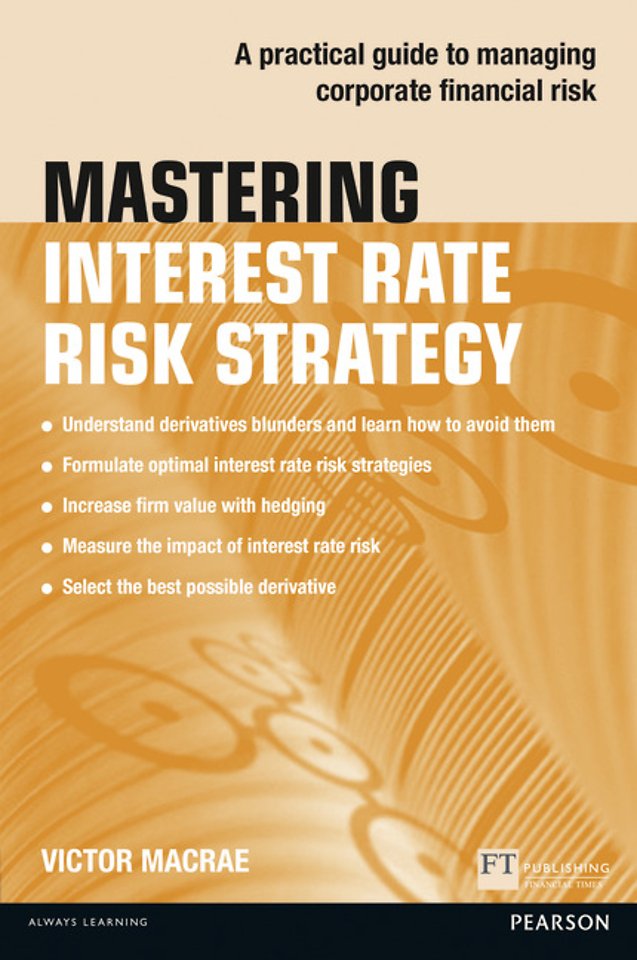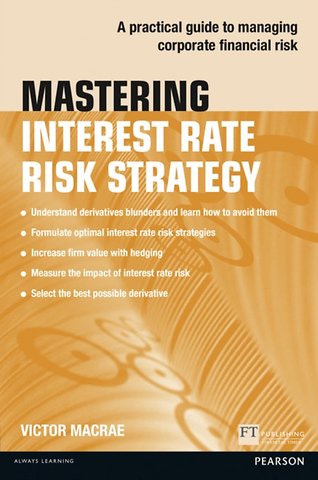Mastering Interest Rate Risk Strategy
A practical guide to managing corporate financial risk
Paperback Engels 2015 1e druk 9781292017563Samenvatting
Financial institutions, private and public companies and governments can lose vast amounts of money from even minor changes in interest rates. Because of this, complex financial instruments have been developed to mitigate these exposures. But what happens when organisations hedge themselves to ill-advised and ill-formulated financial management strategies? Based on a proven analytical method, Mastering Interest Rate Risk Strategy explains, step-by-step, how to set up and run a sound interest rate risk strategy.
Influenced by the author's work with leading companies and tested with banks, the book will help readers bring risk under control, raise profits and ensure healthy cash flows. Mastering Interest Rate Risk Strategy: Shows you how to mitigate interest rate risk using the most advanced risk management techniques Provides you with an analytical method that is proven both academically and in practice Uses examples and real life cases to support the transfer of knowledge and skills Interest rate changes will affect most firms because they will have interest bearing assets or liabilities. As a result, interest rate movements have an unfavourable impact and managing interest rate risk can be highly beneficial for the firm.
But high-profile derivative blunders show that this is no easy task. In Mastering Interest Rate Risk Strategy, Victor Macrae shows you how to avoid the mis-selling of derivatives and derivatives blunders and how to set up an optimal interest rate risk strategy. Mastering Interest Rate Risk Strategy includes: Past derivatives blunders and how you can learn from them A proven analytical method for strategy formulation Hedging theory Bank financing for non-financial firms How movements in the financial markets may affect the firm Financial statement impact of interest rate risk The working and risks of using swaps, FRA's, caps, floors, collars and swaptions 'This is a wonderful and easy to read tour of interest rate risk and its management, and mismanagement.
Anyone who wants to better understand why and how non-financial firms should be dealing with interest rate risk should read this book.' Gordon M. Bodnar, Professor on International Finance, Johns Hopkins University 'Macrae's guide is an excellent cookbook for financial managers. With many cases and examples, this book offers guidance in robust risk management techniques.' Abe de Jong, Professor of Corporate Finance and Corporate Governance at Rotterdam School of Management, Erasmus University
Specificaties
Lezersrecensies
Inhoudsopgave
Introduction
Part 1 KEY LEARNING POINTS FROM PAST DERIVATIVES BLUNDERS
1 Introduction
Newspaper headlines
Five categories of derivatives blunders
Part 2 UNDERSTANDING THE FIRM EXPOSURE TO INTEREST RATE RISK
2 Four sources of exposure to interest rate risk
Introduction
Current or future interest bearing assets or liabilities
Variable interest rate now or in the future
3 Bank financing as primary source of exposure
Introduction
Current account overdraft
Medium and long-term loans
Collateral
Repayment methods
Pricing
Part 3 MEASURING THE IMPACT OF INTEREST RATE RISK ON THE FIRM
4 The financial markets
Introduction
The yield curve
The money market
The capital market
5 Financial statement impact from interest rate movements
Introduction
Liquidity
Solvency
Financial covenants
Cash cycle
Profitability
Share price ratios ;
Part 4 HEDGING MAKES SENSE UNDER SPECIFIC CIRCUMSTANCES ONLY
6 Introduction
Reducing expected taxes
Minimizing financial distress costs
Reducing agency costs
Controlling managerialism
Part 5 SELECTING THE BEST POSSIBLE DERIVATIVE
7 Interest rate derivatives
Introduction
Exchange-traded versus OTC
Linear derivatives versus options
Sources of exposure and matching derivatives
8 Linear derivatives
Introduction
Interest rate swap
FRA
9 Options
Introduction
Cap
Floor
Collar
Swaption
Part 6 How to formulate the optimal strategy: The analytical method
10 Introduction
Central case Trader: a new financing arrangement
The analytical method in full
The analytical method step by step
Afterword
Appendix I: Central case Trader
Appendix II: Proof of the analytical method
Resources
Glossary
Index
Anderen die dit boek kochten, kochten ook
Rubrieken
- advisering
- algemeen management
- coaching en trainen
- communicatie en media
- economie
- financieel management
- inkoop en logistiek
- internet en social media
- it-management / ict
- juridisch
- leiderschap
- marketing
- mens en maatschappij
- non-profit
- ondernemen
- organisatiekunde
- personal finance
- personeelsmanagement
- persoonlijke effectiviteit
- projectmanagement
- psychologie
- reclame en verkoop
- strategisch management
- verandermanagement
- werk en loopbaan







